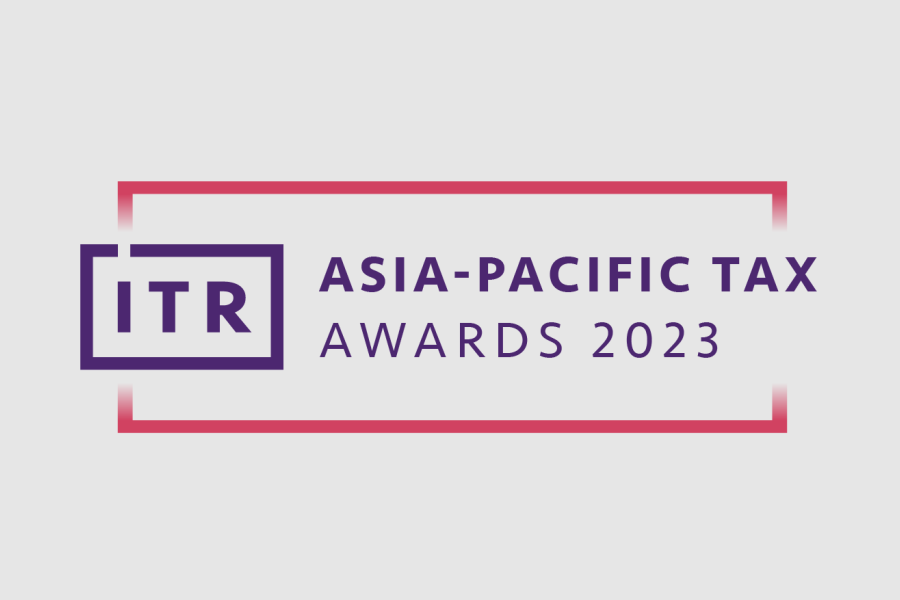Recently, the Japanese Government enforces a new type of tax in the form levy that shall be paid by all people departing from or leaving the Country of Cherry Blossom, except for children under two years old and passengers transitting in less than 24 hours. The levy is known by the term of Sayonara Tax. This policy is not a matter of citizenship, but for both locals and visitors.
The rate of Sayonara tax is of JPY1,000 or equal to IDR126,500 (exchange rate of IDR126.5/JPY). The collection mechanism is by adding Sayonara tax component on the ticket price of airplanes or ships leaving Japan. For travellers on vacation to Japan using travel agent service, the tax may be remitted through the travel agent. Eventually, the airline company, the ship manager, and the travel agent will remit the tax to Japanese tax authority.
The Japan Times reported that the departure tax is the first permanent tax adopted by Japan since 1992. The Japanese Government’s purpose on this policy is to earn additional revenue to fund repair and preservation of tourism facilities and infrastructures in the middle of abundant foreign tourists visits. In addition, the departure tax will be used for promoting Japanese countryside tourists attraction, funding global tourism campaign, procuring multilanguage guidances in national parks and cultural sites in Japan, as well as expanding free Wi-Fi service in public transportation.
In 2018, Japan was awarded the most favorite tourist destination in Travel + Leisure version. The Japan Times reported that, in 2017, there were 28.69 million foreign tourists visited Japan, increasing by 19.3% from the previous year. Meanwhile, Japanese Ministry of Law recorded 45.2 million people—including foreign tourists—left the Land of the Rising Sun in the same period.
With that assumption in mind, the potential of Sayonara tax revenue is estimated to reach around JPY43 billion or more than IDR5.4 trillion per year. The Sayonara tax potential can be higher if the expectation of Japanese Prime Minister Shinzo Abe—who targets the foreign tourist visit to increase up to 40 million people in 2020 and 60 million people in 2030—comes true.
Global Implementation
The “Sayonara tax” policy is not the first in the world. United Kingdom (UK), Australia, Germany, and Singapore have enforced departure tax beforehand.
UK introduced departure tax for the first time in 1994 as a compensation to pay for environmental expense due to flight. UK’s authority imposes such tax in the form of flight passengers duty, in which the rate is adjusted to the traveling distance and flight class.
For short-haul flights or under 2,000 mil from London, the tourists have to pay flight duty amounting to GBP13-GBP26 (IDR242-483 thousand). Meanwhile, for long-haul flights or more than 2,000 mil from London, the economy-class tourists are charged with flight duty of GBP78 (IDR1.45 million), while the premium, business, and first class passengers have to pay in the amount of GBP156 (IDR2.9 million).
Meanwhile, in Australia, the Passenger Movement Charge of AUD60 is imposed on local and foreign citizens leaving the Kangaroo Country by air or sea, both those intending to come back and those not. The fee is usually added to the ticket price by the airline company and sea transportation company. Children under 12 years old and transitting passengers are exempted from the collection.
This is different to the United States (US). The local authority imposes Passenger Facility Charge and Sept 11 Security Fee on anyone flying abroad. Passenger Facility Charge is imposed up to USD4.5 on all passengers of certain airlines. For transit flight in US airports, before departing to other airports, the passengers shall pay twice of the collection. Meanwhile, the security charge imposed is in the amount of USD5.6 for all one way trip. However, the fee imposed in round trip is limited to USD11.2.
The same also happens in Germany, which enforces Air Transport Tax starting from January 2011. German authority imposes two types of rate related to the collection, depending on the traveling distance and destination. Short-haul flight passengers are charged with levy of EUR7.5, while long-haul flight passengers shall pay EUR40.
Singapore government has also charged tax to all airplane passengers departing from Changi Airport. All transitting passengers are charged with Departure Tax of SGD6, while those really leaving Singapore are charged with SGD34. The departure tax consists of passenger service fee, security tax, and retribution.
Similar scheme is also conducted by Thailand that imposes departure tax of THB700 on all international flight passengers. This fee also applies to transitting passengers leaving Thailand airport during long transit period.
China formatted its departure tax in the form of Airport Construction Fee. The tax rate is of CNY90 for international tourists and CNY50 for anyone flying between regions in China. The tax also applies to flights to Hong Kong. Passengers holding diplomatic passport or those who transit in 24 hours are not obliged to pay such tax.
Domestic Condition
If we take a look at Japan that gets large number of tourists in the last several years, Indonesia also experiences the same. At least more than one million foreign tourists visit Indonesia each month. In fact, in one last decade, the number grew by 10% per year in average.
Statistics Indonesia (Badan Pusat Statistik/BPS) recorded that the number of foreign tourists visit to Indonesia in 2018 has reached 15.81 million visits or increased by 12.58% compared to foreign tourist visit in the same period in 2017, which amounted to 14.04 million visits.
Indonesia came in the 9th place of the country with the fastest tourism growth in the world, 3rd in Asia, and 1st in Southeast Asia. The indicator was the growth of Indonesian tourism that reached 25.68% in the last few years, far ahead the sectoral growth in Southeast Asia of 7% and global tourism growth of only 6%.

However, the high number of tourists is not always a good thing for a region. The overflowing visit of tourists can also endanger the beauty of the tourism area itself.
Bali, for example, the island well-known for its view and culture has experienced “waste emergency”. In 2017, it was recorded that six kilometers of Bali coastline covering popular beaches such as Jimbaran, Kuta, and Seminyak were crowded by tonnes of waste. Environmental and Sanitation Agency of Badung Regency, Bali had to mobilize at least 700 cleaning staffs and 35 trucks to dispose around 100 tonnes of waste to the landfill site every day.
Other than waste, the massive visits of tourists allegedly harm and damage the ecosystem in Komodo National Park, East Nusa Tenggara. The exploitation of komodo dragon in the other hand is also triggering illegal hunting of deers as the main prey of the ancient animal. This alarming condition has initiated the plan to temporarily close Komodo National Park from tourism activity in 2020.
Thus, the factor of damaged environment shall also be seriously concerned by Indonesian Government, not to be carried away by tourism industry contribution to economic growth and employment creation. At least, the exploitation of Indonesian natural splendor shall be accompanied with the environmental preservation as well as facilities and infrastructures repair in various tourism areas.
It has to be admitted that the tourism competitiveness index of Indonesia has been improving year by year. Based on the data of World Economy Forum (WEF), Indonesian tourism competitiveness ranked 42nd in 2017, up from 50th position in 2015. However, behind the potential as well as the growth showing the trend of improvement, tourism sector is still having some problems, mainly in the field of tourism supporting infrastructure, environmental sustainability, as well as tourism environmental health and hygiene.
To handle such problem, real initiative and breakthrough policy is needed. It is not only limited to work program and the spirit to put up the infrastructure, the budget provision to fund such shall also be considered.
Consequently, the Sayonara tax policy in Japan or departure tax applied in many countries in the world is relevant to be adopted in Indonesia.
Taxation Scheme
However, it is not easy to directly implement the departure tax policy in Indonesia. There are a lot of factors to be considered, not only the economic and social impacts. The hardest challenge is the absence of regulation and political support which oftentimes is not in line with the government spirit.
This is because setting up a new type of tax in Indonesia is not an easy task if the legal protection being the parent is not accomodating it. As mandated in the Article 23A of 1945 Constitution, “All taxes and other levies that are compulsory for the needs of the state shall be regulated by law”.
Thus, amendment to tax law or execution of new regulation in the level of law is needed to tax the tourists. The political process must be exhausting as it will drain energy and mind as well as consume a long time. Therefore, if the government expects to earn revenue in the form of central tax, it will be more difficult to be realized immediately.
Actually, the implementation of “Sayonara tax” can be done by the local government, generally under the Local Taxes and Retributions (Pajak Daerah dan Retribusi Daerah/PDRD) Law. It reflects on the initiative of Bali Province Government. In order to preserve natural environment and local culture, Bali Province Government plans to arrange Proposed Regional Regulation (Rancangan Peraturan Daerah/Ranperda) stipulating the retribution levy from tourists visiting Bali of USD10 per person.
Unfortunately, the “Sayonara retribution” plan is only in Bali and has not spread to other tourism regions in Indonesia. Even if it is implemented simultaneously in several places, the positive impact on budget and environment preservation will not be distributed evenly since the level of tourist visit in each region is different to one another.
Other than that, local retribution will lower the Indonesian tourism attraction for foreign tourists. This is because, if each region issues similar policy, the foreign tourist transitting in several tourism destinations in Indonesia will be potentially subject to retribution more than once.
It will be different if the policy is undertaken by the central government that will only collect the departure tax once at the time the tourist leaves Indonesia. The additional state revenue can also be used nationally in order to conduct development related to tourism in Indonesia.
The alternative may be conducted in the form of Non-Tax State Revenue (Penerimaan Negara Bukan Pajak/PNBP). Law Number 20 year 1997 explains that PNBP is all non-tax revenues of Central Government earned from Government fund management; natural resources utilization; separated State assets management results; services provided by the Government; revenue based on court decision and those from administrative sanction charge; revenue in the form of grant as the Government’s rights; and other revenues as stipulated in separate Law.
In other words, the type of levy not yet covered in PNBP group, such as levy on tourists, may be collected in central level only by issuing Government Regulation.
The scheme of PNBP collection is also beneficial considering the implementation of earmarking concept in PNBP’s financial management. The principle of PNBP can also be used in activities related to the type of levy applied. In this case, if the levy is collected by authority related to tourism, the result may be used in accordance with national long-term plans related to tourism. Therefore, development related to tourism in Indonesia can be evenly distributed.
The form of levy on departure can also be specifically aimed at foreign tourists enjoying tourism destinations in Indonesia, while domestic tourists will not be charged with similar levy. The PNBP collection can be added in the ticket with the destination to outside Indonesia (for example, airplane and ship tickets).
Under the assumption that the levy rate is of IDR100 thousand per person and reffering to the number of foreign tourists transit in Indonesia (15.8 million tourists in 2018), the potential of additional state revenue from the new type of tax is around IDR1.5 trillion per annum. This number will get bigger as the foreign tourists visit number approximately grows by 10% per year.
In brief, Indonesia can adopt departure tax as the new state revenue source as seen from the potential of nature and foreign tourist growth number. However, considering the long process of Law ratification for a new tax collection, levy in PNBP scheme can be the best option in collecting the departure tax.







